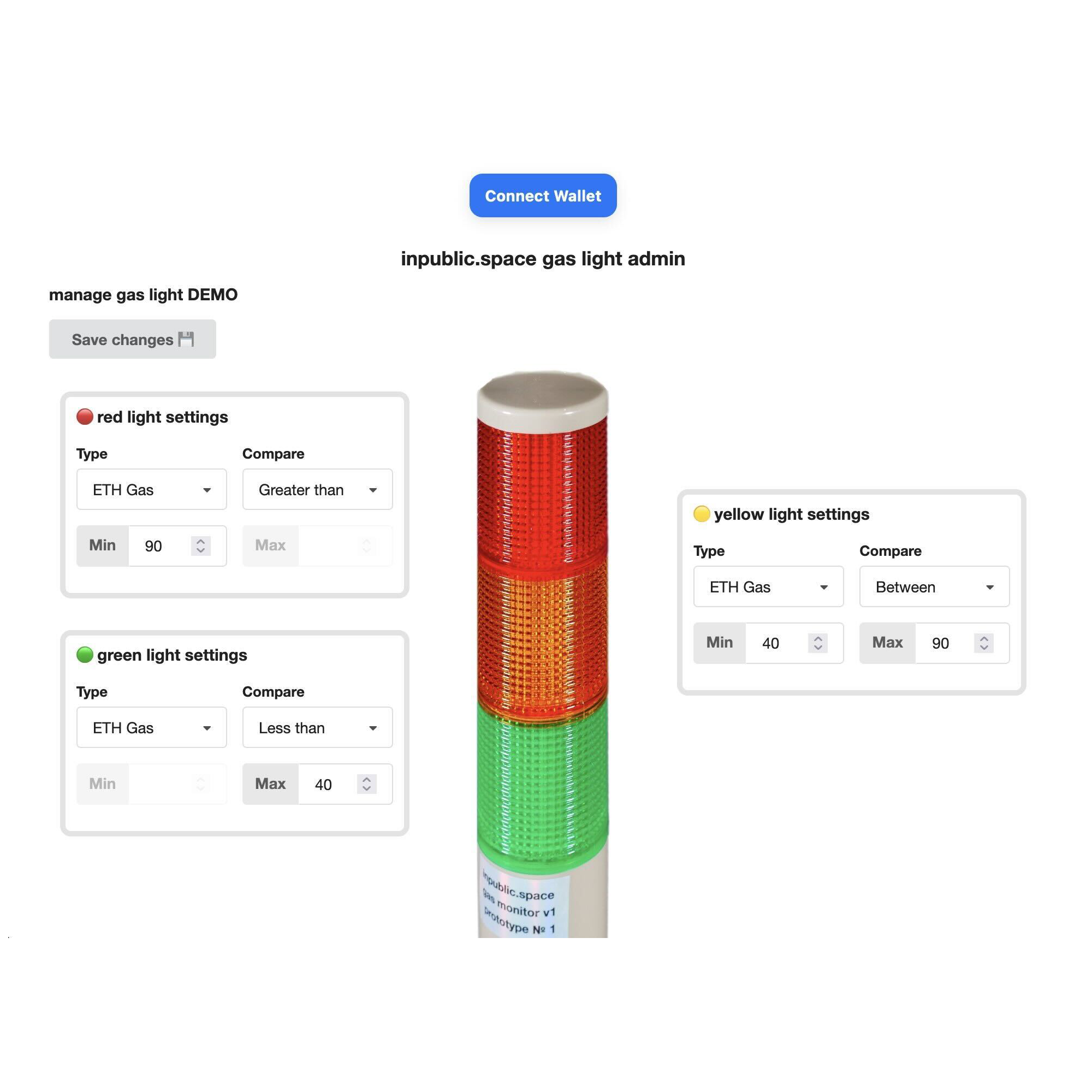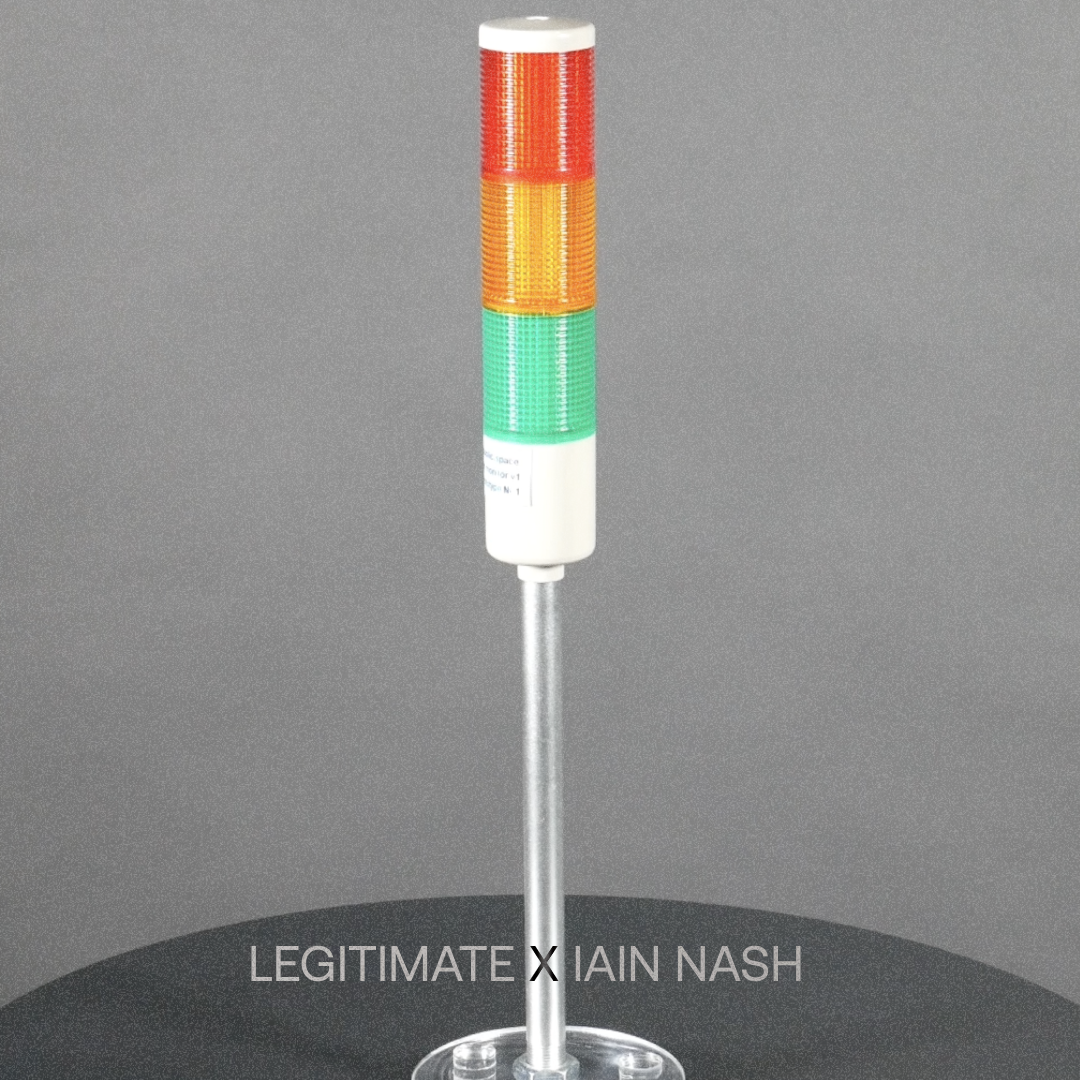Artist Spotlight: Iain Nash - The BlockLamp
Iain Nash is a creative technologist and trained engineer, who graduated from USC’s computer engineering program. His artistic edge is informed by his study of photography and interactive design during his final years of university. Fittingly, his BlockLamp fuses a multimedia artist’s curiosity with an engineer’s analytical thinking. The BlockLamp is an NFT-controlled admin interface that allows its owner to set conditions — such as the fluctuating price of gas or the Ethereum (ETH) price in USD — to affect which colors of the lamp light up. With Legitimate, Iain has released the first of three prototype BlockLamps, which seamlessly incorporate a full controller system and WiFi connectivity into a standard industrial status lamp.
Iain, himself, is always seeking out opportunities to experiment with electronics and empower artists in his field. In New York City, he often supports galleries and artists to accomplish various experiential events. His practice focuses on infrastructure as art through teaching. Currently, Iain works for Zora, a blockchain media protocol, inventing products and projects with Holly Herdon, Rhizome, PleasrDao, and Matthew Ball.
Iain Nash’s BlockLamp launched on Legitimate’s Drops platform August 16th. This interview is part of Legitimate’s ongoing series, Artist Spotlight, which features interviews with some of our features artist collaborators for Drops. Check out Iain’s launch on drops with Legitimate here.
Have you always been a creative technologist and artist?
I’d say that I have ‘built things’ for most of my life — but had not really considered the idea of artists and creative technologists as a profession until I was in the second half of my university education. I was working at a laboratory, studying mobile communication and interactive technology. For my minor, I was doing a lot of photography — something I had a real interest in. A lot of my knowledge and experiences from that photography work came with me to New York City, and so I was able to continue connecting with creative people, while building my skills and ideas out.
That’s awesome — what installation or piece do you feel most proud of so far?
Around 2018, I decided I wanted to begin creating large-scale installation pieces. I had previously done a lot of smaller pieces for parties, proof of concepts…but I wanted to build something big. There is an installation I did at a furniture gallery with another artist: the gallery briefed us on their idea of using scrim fabric material that was hanging from their ceiling. The whole piece was about visual movement and flow; they wanted to have that scrim move to a soundtrack. Our team figured out how to wire over 100 fans — not just 3 or 4 — to systematically sway the fabric. Then, we created a really beautiful computer simulation, combining the music’s rhythm with the movement of the fans and fabric.
There’s one thing I am curious about, given that your artwork has a utility and functionality ingrained in it: how do you personally define a successful project? Do you measure success in terms of work that’s tactically complex? Does the fact that someone purchased your creation influence your feelings?
The sense of utility in my work is a feature that really dates back to when I was younger. I’d spend time building electronic devices and the idea that you could have a board with electricity running through it was fascinating to me. That fascination definitely contributes to the extra dimension of utility that appears in my work. That said, unless you have a strong background in constructing electronic devices — because you worked really hard to study engineering — it’s going to be hard to pick up on a whim. The complexity of electronic devices is definitely something that I enjoy exploring. Then again, I think it really comes down to how you draw in others’ attention, rather than how complicated the creation process was.
Overall, I don’t really think about the purchasing aspect much. Prior to NFTs, I’d only get paid for my time working on a project and my materials — and so that was my financial metric.
Which of your more simple pieces garnered a lot of attention?
I loved a piece I did for the Stupid Shit No One & Terrible Ideas Hackathon. Yeah…it was called Waiting for Godot. Back in the good old days when Facebook wasn’t as ‘locked out,’ we built a little app that you could run on your computer and connect to your Facebook account. Then, whenever anyone wrote a Facebook message to you, it would respond to them with the typing indicator forever. You’d just be leaving people on the edge of their seats for as long as you were running the program. It was kind of hilarious — but also core to how many of my pieces back then addressed the platforms and online tools that influence communication.
That’s so funny. And I think it’s really fascinating because there’s the juxtaposition between you as an engineer, shaping how we communicate, with you as an artist — a performance artist of sorts. I’m definitely curious about the BlockLamp. How long did it take you to make it? What was your inspiration?
The BlockLamp is very much a utility piece, more so than a piece of art. The first version was made from stuff I had lying around my house. I work at a blockchain media company, and at the time I was frustrated deploying a bunch of contracts. I would look at my laptop, check the gas price, leave to do another task, and cyclically go back to check the gas price again. I thought to myself, ‘what if I could have a piece of furniture that was editable within my apartment, so that I wouldn’t need to look at my phone or laptop to check the price of gas?’
In that vein, I’ve done all sorts of weird things with the Internet of Things (IoT) for my own house — and the BlockLamp is a big part of how that started. I think the next step was when Legitimate reached out and said, ‘hey, people responded to this sort of thing really well.’ So I cleaned up the electronics and started working with them.
That’s awesome. I’d love to know what IoT things you have in your house that are your favorite or that impress guests when you come over.
Um, well, I guess my evolution is hopefully that nobody will really notice it. Because the more successful stuff I’ve made is discreet; it’s not quite noticeable. One memory that does stand out, though, is from when I lived in old-fashioned apartments in New York. In my first two apartments, there was a really outdated buzzer, so I built a ‘button pusher robot’ that I could text to unlock the door.
What about the Ethereum block? What interested you about it and why did you choose to build on the Ethereum blockchain?
I was introduced to Ethereum blockchain through hackathon format. In college, I organized a pretty large hackathon. Afterwards, I did some mentoring and remained in that circle of people. Eventually my friend was like, ‘come do a hackathon for Ethereum, I think you’ll like it.’
The part of Ethereum that was really fascinating to me was its natural community: it speaks to the people developing the blockchain — and their human values — while also appreciating the function of the blockchain itself. I like the layers of Ethereum that reflect a human thought process for how to participate. Like, if I want to become part of a theory, I can plug in a server here and no one will tell me otherwise; I can just join the network.
What do you think is the future of Web3? I see you’re a teacher. Do you think that the progression of Web3 going mainstream will be about education?
Well, if you back up a little bit and think about how Web2 works, wherein your data is owned by a centralized entity. For example, say you’re on Twitter or Facebook and write a post. That post’s data is then owned by Twitter or Facebook — and if you’re not on good terms with them, you don’t quite have that data anymore.
One of the cool things about Web3, then, is that we can share data publicly for anyone to read. This does create a list of other problems. Specifically, deleting is difficult and has not really been solved at scale. However, it does create a mindset that anyone can read and communicate, so if I were using a Web3-based Twitter, for instance, and that company went under, I’d still have an archive of all my data. The access to data is open, and depending on how you look at it, that is a benefit.
I have one last question. What do you consider will be a marker of success for your drop with Legitimate?
For this project, I think success will be the ability to deliver a product that people are happy with and that takes in a new paradigm. One of the reasons I was really interested in doing a drop with Legitimate is because of NFT-based ownership and how a physical device is tracked by that ownership. When you download the average app, you typically log in with your email and password, then scan a QR code to authenticate that you own a certain product. Let’s say it’s a smart lamp, similar to my BlockLamp. But that company is tracking your email — it’s tracking your phone access — and if I one day sold the product, it could become bricked on my account and ownership.
The idea with Legitimate is to connect the management of the BlockLamp to an NFT. You would log in with that NFT and be able to manage the settings for your device; you don’t need a password, email, or to worry about transferring ownership in the future. It solves a lot of functional problems.
Shop the Physical NFTs mentioned in this article on Drops by Legitimate here:



